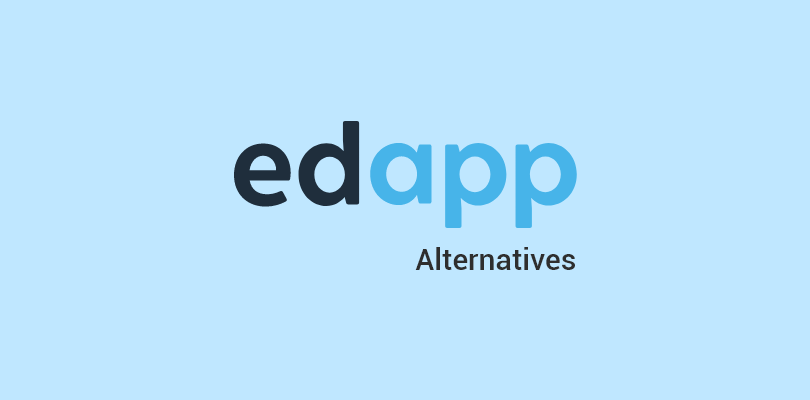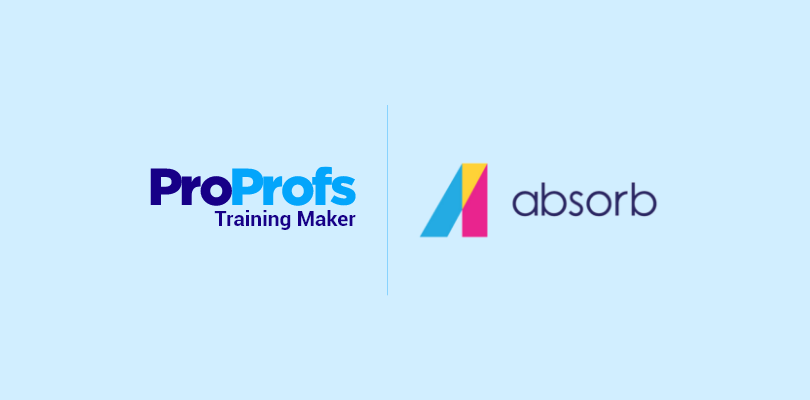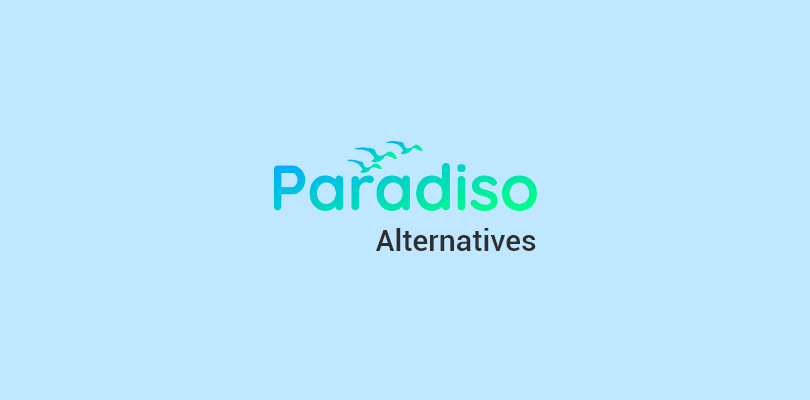Imagine this: You’re tasked with finding a new learning management system (LMS) for your company. You browse countless options, each promising the moon and stars. But how do you sift through the hype and pinpoint the LMS that truly aligns with your needs?
The answer lies in an LMS RFP (request for proposal). It can be your roadmap to a smooth selection process that ensures you don’t get stuck with a system that falls short.
This definitive guide will equip you with the knowledge to write an effective LMS RFP. I’ll break it down into the importance, types, key components, mistakes to avoid, and more.
So, ditch the guesswork and keep reading to learn how to find your ideal LMS partner.
What Is an LMS RFP?
A learning management system RFP is a formal document organizations use to initiate the process of selecting a new LMS. It is similar to a tender for public works in the government sector that invites proposals from bidders.
The RFP outlines an organization’s specific needs and requirements for an LMS. This includes the type of training they deliver, the number of learners, desired features, budget, and success metrics.
By clearly laying out their needs, organizations can ensure that LMS vendors respond with directly relevant proposals. This saves time and resources during the selection process.
Organizations looking to implement a new LMS or potentially switch from their current one generally use an RFP.
Why Do You Need an RFP for LMS?
An LMS RFP helps attract qualified vendors who can meet your organization’s specific needs. It encourages vendors to submit their best offers, and you receive competitive bids in the process.
A well-crafted RFP streamlines the selection process and creates a level playing field by ensuring that all vendors respond to the same criteria.
Many resources, including LMS RFP templates and best practices guides, are available online to help organizations develop a strong LMS RFP.
In short, an RFP is a valuable tool that helps organizations make informed decisions when selecting an LMS. It ensures they get the best possible value for their investment and a system that meets their specific training requirements.
What Are the Different Types of LMS RFP?
LMS RFPs come in different forms depending on what aspects of the learning management system you want to emphasize.
Here’s a quick look at the popular LMS RFP examples or types:
1. Functional RFP
This RFP focuses on the functionalities you need in an LMS. It outlines the specific tasks and features the LMS should perform to align with your organization’s goals. Examples include the ability to deliver SCORM-compliant courses, user management through roles and permissions, and reporting tools to track learner progress and course completion.
2. Technical RFP
This RFP dives into the technical specifications of an LMS. It outlines the hardware, software, and network requirements necessary to run the LMS smoothly within your existing infrastructure. Examples include operating system compatibility (e.g., Windows, Mac), server capacity requirements to handle your anticipated user load, and security protocols to protect learner data.
3. Services RFP
This RFP relates to the implementation and ongoing support offered by an LMS vendor. It outlines the services you expect the vendor to provide, such as user training on how to navigate and utilize the LMS effectively, data migration assistance from any existing LMS you might be using, and ongoing technical support to address any issues that arise.
4. Compliance RFP
This RFP is crucial for organizations that need the LMS to comply with specific industry regulations or standards. It outlines the security, privacy, and accessibility requirements the LMS must meet. Some examples of compliance considerations include General Data Protection Regulation (GDPR) compliance for data privacy in the European Union, FERPA (Family Educational Rights and Privacy Act) compliance for protecting student data in the US, and WCAG (Web Content Accessibility Guidelines) accessibility standards to ensure the LMS is usable by everyone.
By understanding these different types of LMS RFPs, you can tailor your request to focus on the aspects that are most important to your organization’s needs. This will help you get better proposals from vendors and ultimately choose the LMS that’s the best fit for you.
Key Components of a Learning Management System RFP
One RFP for LMS may differ from another depending on the organizational needs, industry, learning goals, and existing infrastructure. That said, the key structure of all standards LMS RFPs remains largely the same.
Here’s a breakdown of the essential components:
1. Project Summary
- This is a concise overview of your entire LMS project.
- Briefly explains your organization and its training goals.
- Highlights the key challenges you’re trying to address by implementing an LMS.
- Mentions the expected timeline for the project, including implementation deadlines.
- This section grabs the vendor’s attention and gives them a quick understanding of your needs.
2. About the Project
- This section dives deeper into the details of your project.
- Describes the type of learners you’ll be targeting (employees, customers, partners, etc.).
- Specifies the number of learners you anticipate using the LMS.
- Outlines the types of training content you plan to deliver (eLearning modules, instructor-led training, blended learning, etc.).
- Mentions any specific features or functionalities you consider essential for the LMS (content authoring tools, reporting, mobile learning capabilities, etc.).
- Briefly discusses your existing learning infrastructure and any integrations you need with other systems (e.g., HR system, payroll system).
- The more details you provide here, the better vendors can understand your specific requirements and tailor their proposals accordingly.
3. About the Vendor
- In this section, you outline your expectations for the vendor you choose.
- Specifies the desired qualifications and experience of the vendor, particularly in your industry or with similar learning needs.
- Mentions the level of customer support you expect, including implementation assistance, ongoing maintenance, and user training.
- If you have specific requirements for data security and privacy, you outline them here as well.
- You can also mention your preferred pricing model (subscription, one-time license, etc.)
By clearly defining your expectations in this section, you attract vendors that are well-equipped to handle your project and meet your long-term needs.
Remember, a well-crafted RFP is key to receiving proposals that are targeted and relevant to your specific LMS requirements.
Get Free LMS Software — All Features, Forever.
We've helped 567 companies train 200,000+ employees. Create courses in under a minute with our AI LMS or use 200+ ready-made courses on compliance, harassment, DEI, onboarding, and more!
How to Write an Effective LMS RFP
The key to attracting the right LMS partner lies in crafting a winning LMS RFP. It serves as the foundation for finding the ideal LMS for your organization.
Here’s how to go about it:
Before You Write:
- Do your research: Identify your specific needs and goals for the LMS. Involve stakeholders across the organization to understand their expectations. Research LMS options on the market to get a general sense of functionalities.
- Define your business case: Clearly outline the problems your LMS will solve and how it aligns with your overall training strategy. What are the expected outcomes and how will you measure success?
Writing the RFP:
- Clarity is key: Use concise and professional language. Avoid technical jargon that vendors might not understand.
- Start with an overview: Briefly introduce your organization and the scope of the LMS project. Here, clearly define what you are looking to achieve with the LMS. What are your training needs and how will the LMS address them?
- Communicate your expectations and terms: This section should detail the features you require in the LMS. Prioritize these features based on importance. Consider future needs and scalability. Additionally, outline your expectations for implementation timelines, training, and ongoing support.
- Background information with vendors: Provide a company overview, including your industry, size, and learner base. This will help vendors understand your specific context and tailor their proposals accordingly.
- Content and user considerations: Specify any specific content types you plan to use (e.g., videos, SCORM) and the number of learners you anticipate.
- Integration needs: Outline any existing systems the LMS needs to integrate with (e.g., another LMS, HRIS).
- Evaluation criteria: Establish how you will evaluate proposals. This might include features, pricing, implementation timeline, and vendor experience.
- Timeline and budget: Set a realistic timeline for the RFP process and proposal evaluation. If you have a budget in mind, you can mention a range.
- Questions for vendors: Include a list of questions to encourage vendors to elaborate on their solutions and fit for your needs.
After the RFP:
- Allow for questions: Encourage vendors to clarify any doubts they might have about the RFP.
- Evaluation process: Assemble a team to evaluate proposals based on your established criteria. Schedule demos with shortlisted vendors.
Common Mistakes in LMS RFP & How to Avoid Them
Avoid these common mistakes when crafting an LMS RFP:
- Unclear Needs & Requirements: Not having a clear understanding of your organization’s learning and development goals before writing the RFP.
How to Avoid It: Involve stakeholders from across the organization, including learners, instructors, and administrators, to identify your specific needs. This will help you write clear and concise requirements in the RFP. - Ignoring Stakeholder Input: Failing to get buy-in from all stakeholders on the LMS project.
How to Avoid It: Get feedback from all stakeholders on the RFP before finalizing it. This will help you ensure that the LMS meets the needs of everyone who will be using it. - Overemphasizing Cost: Focusing solely on price in your evaluation criteria.
How to Avoid It: While cost is an important factor, it should not be the only one you consider. Other factors, such as functionality, scalability, and ease of use, are also important. - Ignoring Compliance and Security: Not including your compliance and security requirements in the RFP.
How to Avoid It: Clearly outline your legal, regulatory, and security requirements in the RFP. This will ensure that the LMS meets your compliance needs and protects your data. - Not Defining Evaluation Criteria: Not having a clear evaluation process for vendor proposals.
How to Avoid It: Define your evaluation criteria in the RFP. This will help you compare proposals objectively and select the best vendor for your needs. - Unrealistic Timelines: Setting unrealistic deadlines for vendor responses or implementation.
How to Avoid It: Be realistic about the time it will take vendors to respond to the RFP and for the LMS to be implemented. - Poor Communication: Not communicating effectively with vendors throughout the RFP process.
How to Avoid It: Clearly communicate your expectations to vendors and be responsive to their questions. This will help you ensure a smooth RFP process.
Criteria for Evaluating a Request for Proposal (RFP)
These criteria for evaluating an RFP will help you identify the proposal that best meets your needs. Here are some key aspects to consider:
1. Relevance
- Project Understanding: Does the proposer demonstrate a strong understanding of your project goals and challenges?
- Alignment with Needs: Does the proposal clearly address the specific requirements outlined in the RFP?
2. Capability & Expertise
- Team Qualifications: Are the proposed team members skilled and experienced in the required areas?
- Technical Expertise: Does the proposer have the necessary experience and qualifications to complete the project successfully?
- Past Performance: Does the proposer have a history of successful projects similar to yours?
3. Approach & Methodology
- Project Plan: Does the proposal include a well-defined project plan with clear timelines, milestones, and deliverables?
- Work Breakdown Structure: Is there a clear breakdown of tasks and how they will be accomplished?
- Project Management: Does the proposer demonstrate a strong project management methodology?
4. Cost and Value
- Total Cost: Does the proposed cost fit within your budget?
- Cost Breakdown: Is there a clear breakdown of all costs associated with the project?
- Value Proposition: Does the proposal demonstrate the value you will receive for the proposed cost?
5. Other factors
- Innovation: Does the proposal include any innovative ideas or approaches that could benefit your project in the long run?
- Communication Strategy: Does the proposer outline a clear communication plan for keeping you informed throughout the project?
- Compliance: Does the proposal meet all legal and regulatory requirements?
- Overall Fit: How well does the proposer seem to understand your organization and culture?
Weighting the Criteria
Assign a weightage to each criterion based on its importance to your project. This helps prioritize factors critical for your decision-making.
By using these criteria and a weighted scoring system, you can objectively evaluate RFPs and select the proposal that best positions your project for success.
Draft Your Detailed & Effective LMS RFP Today!
In conclusion, crafting a well-defined LMS RFP is key to finding the perfect platform for your organization’s needs. By following a structured approach and clearly outlining your goals, requirements, and evaluation criteria, you’ll receive targeted proposals from qualified vendors. Use a standardized learning management system RFP template to develop effective requests for proposal.
ProProfs understands the challenges many prospective LMS buyers face in this process. With a delightfully easy and feature-rich LMS solution and industry expertise, it can guide you through selecting and implementing the ideal LMS for your learning and development initiatives.
 Tips
Tips
We’d love to hear your tips & suggestions on this article!
Get Free LMS Software — All Features, Forever.
We've helped 567 companies train 200,000+ employees. Create courses in under a minute with our AI LMS or use 200+ ready-made courses on compliance, harassment, DEI, onboarding, and more!

 We'd love your feedback!
We'd love your feedback! Thanks for your feedback!
Thanks for your feedback!







